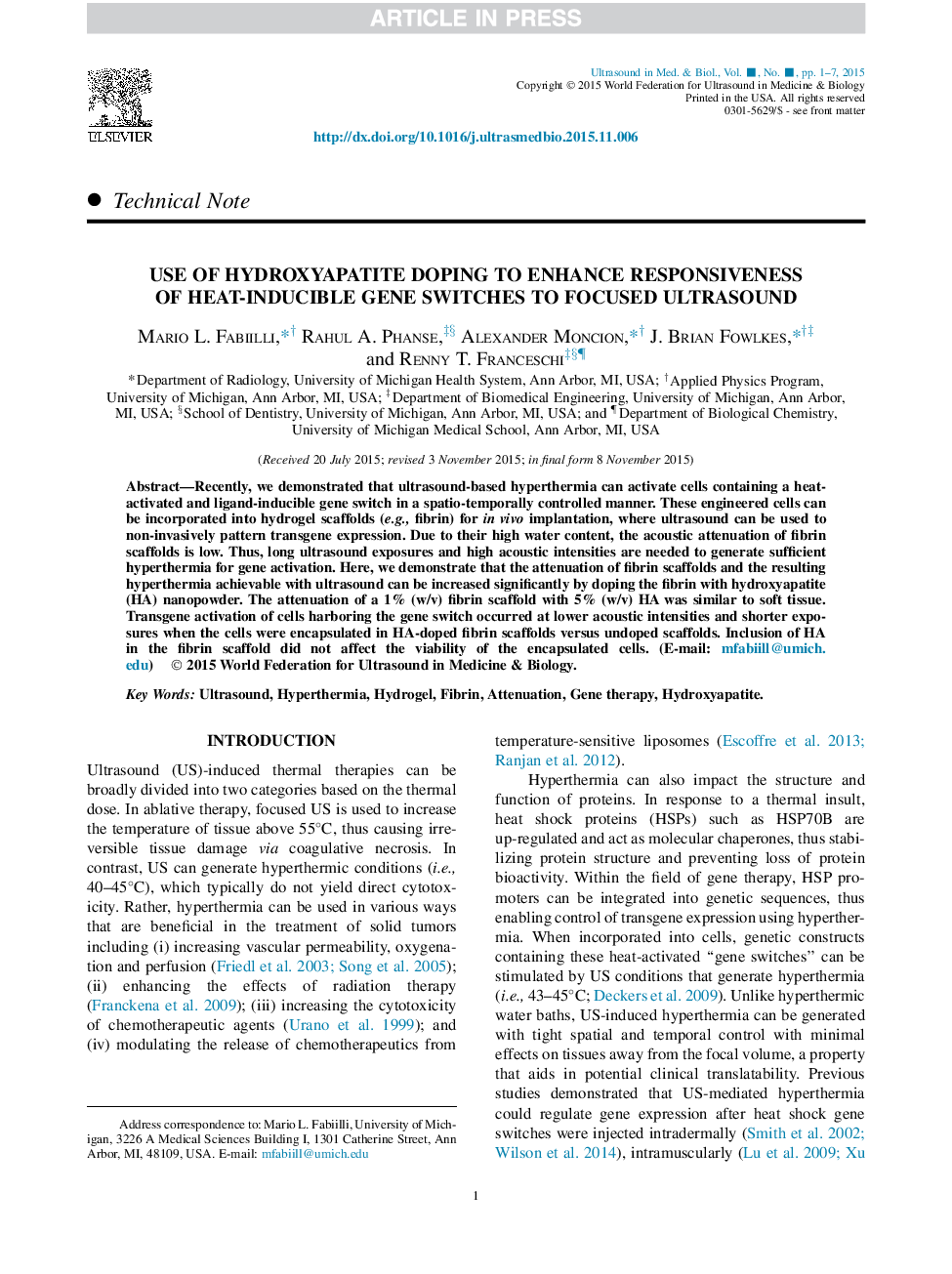| Article ID | Journal | Published Year | Pages | File Type |
|---|---|---|---|---|
| 10691196 | Ultrasound in Medicine & Biology | 2016 | 7 Pages |
Abstract
Recently, we demonstrated that ultrasound-based hyperthermia can activate cells containing a heat-activated and ligand-inducible gene switch in a spatio-temporally controlled manner. These engineered cells can be incorporated into hydrogel scaffolds (e.g., fibrin) for in vivo implantation, where ultrasound can be used to non-invasively pattern transgene expression. Due to their high water content, the acoustic attenuation of fibrin scaffolds is low. Thus, long ultrasound exposures and high acoustic intensities are needed to generate sufficient hyperthermia for gene activation. Here, we demonstrate that the attenuation of fibrin scaffolds and the resulting hyperthermia achievable with ultrasound can be increased significantly by doping the fibrin with hydroxyapatite (HA) nanopowder. The attenuation of a 1% (w/v) fibrin scaffold with 5% (w/v) HA was similar to soft tissue. Transgene activation of cells harboring the gene switch occurred at lower acoustic intensities and shorter exposures when the cells were encapsulated in HA-doped fibrin scaffolds versus undoped scaffolds. Inclusion of HA in the fibrin scaffold did not affect the viability of the encapsulated cells.
Related Topics
Physical Sciences and Engineering
Physics and Astronomy
Acoustics and Ultrasonics
Authors
Mario L. Fabiilli, Rahul A. Phanse, Alexander Moncion, J. Brian Fowlkes, Renny T. Franceschi,
